I love perennials because they’re all about “planting it forward,” putting plants in the ground that will pay back bigger and better in seasons to come. Perennials aren’t generally about instant color and gratification. That’s the job of annuals. But next to trees and shrubs, perennials of all colors and sizes help create the “bones” of any beautiful landscape.
With that in mind, I thought it might be fun to check with Richard and Teague, the masterminds of Tagawa’s Perennials Department, to see if there are plants they admire that are under-appreciated by home gardeners. They had plenty of nominations, which follow in no particular order.
Heartleaf Bergenia
This mostly shade-loving plant was new to me when it showed up on the nominations list I mentioned above, but with its sweet clusters of showy pink flowers, I can see why it’s well worth consideration.
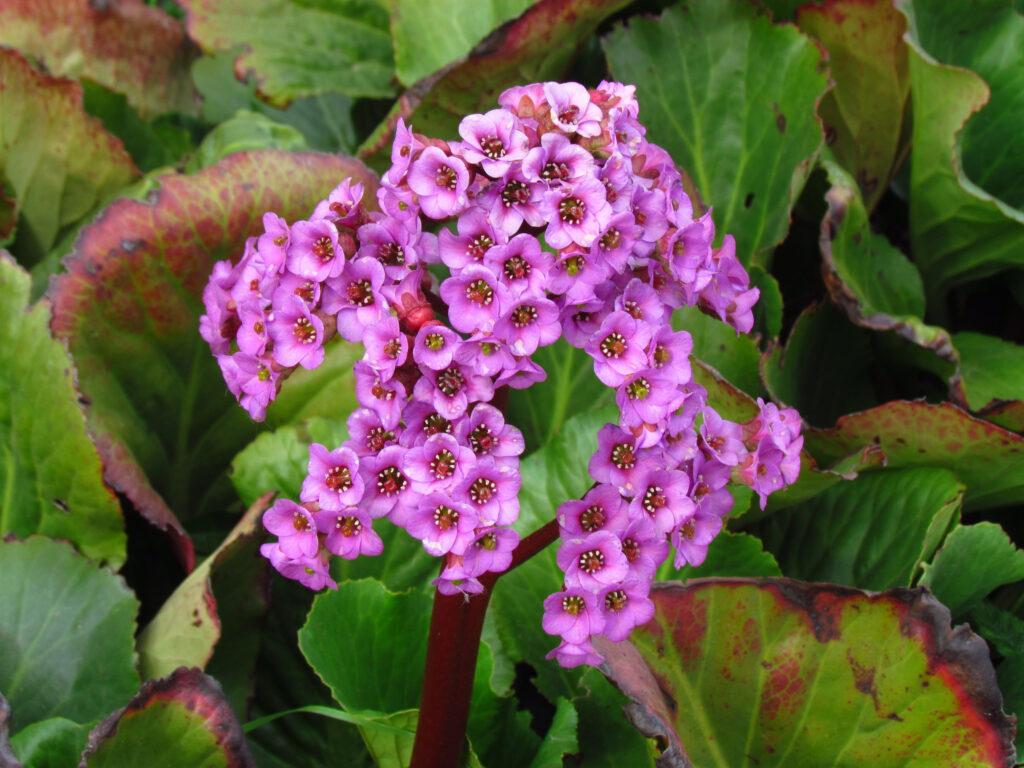
Heartleaf bergenia is a succulent groundcover best suited to morning sun or full shade. The fuchsia-colored flower clusters are on display from mid to late spring, held high on sturdy stems that rise several inches above the foliage.
But this plant has more than pretty blossoms going for it. The foliage emerges a rich burgundy in spring and then turns a rich green during the summer after the flowers have faded. As fall approaches, the leaves turn burgundy once again.
Heartleaf bergenia matures to 15″ tall and 18″ wide. It’s adaptable to either moist or dry locations and is especially cold hardy.
Chocolate Flower
This flower I know well. I’ve been growing it for years, and it always brings a smile…not just because of its slightly sassy sprawling habit, but because it smells like chocolate! Yum!
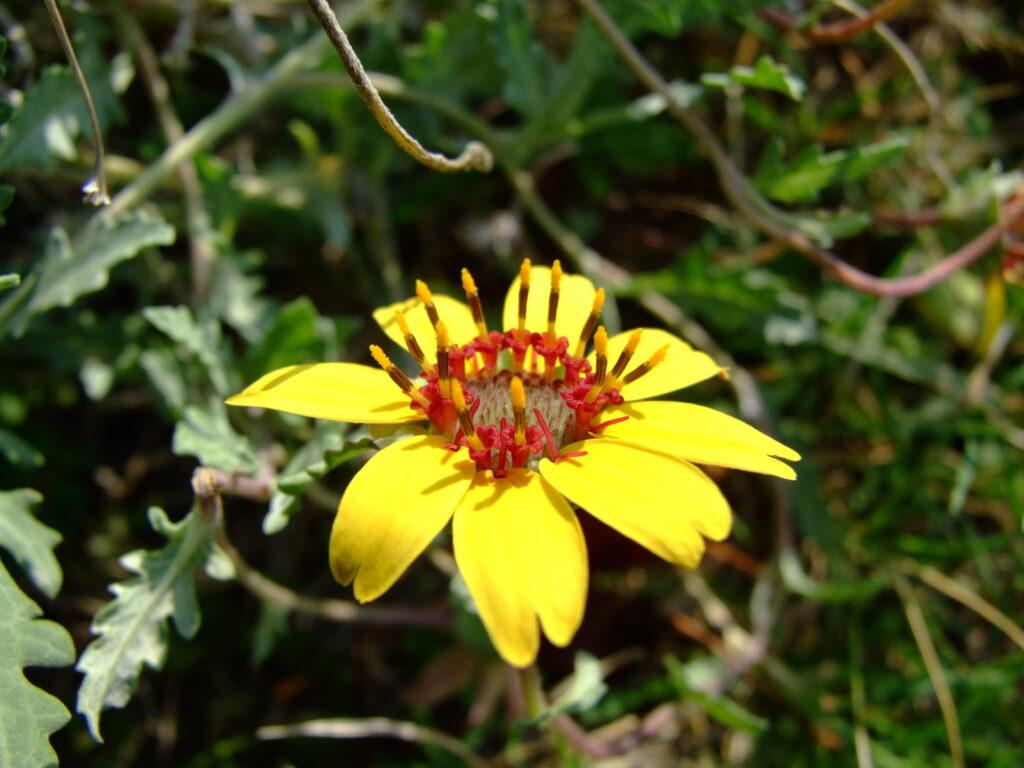
I’m a dark chocolate fan myself, but a flower that wafts an unmistakable milk chocolate fragrance in the warmth of the sun? Ya, I’m game!
I was introduced to Chocolate flower through Plant Select, the joint effort of Colorado State University, Denver Botanic Gardens and the green industry, which includes plant-focused businesses like Tagawa. Plant Select’s mission is to find and promote plants that are an especially good fit for our high plains climate.
Chocolate flower’s appeal isn’t just its fragrance. The bold yellow daisy-like flowers speak for themselves. If you leave a few of them in place once the petals fade, little green “buttons” are left behind… just adding to the plant’s fun-loving personality.
Chocolate flower grows to about 24″ tall and wide and demands full sun and very well-drained soil. As I said, it can get a bit loose and rangy, especially if it gets more water than it really needs.
Meadow Rue
If your landscape includes a roomy spot in a somewhat moist and shady setting, Meadow rue may be just the plant for you.
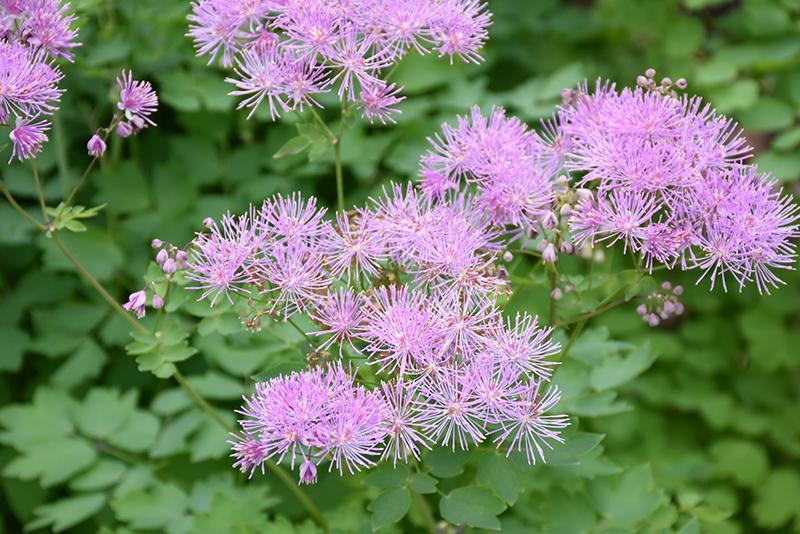
Meadow rue is a bit fussier than some of the other plants featured here. It needs evenly-moist but never soggy soil, well-amended with compost. In return, it will produce airy clusters of pale pink and white flowers held high above blue-green fern-like foliage in early summer. The blossoms are attractive to pollinators and make very nice cut flowers.
Meadow rue needs its space! It will mature to four feet tall (with flowers), and 23 inches wide.
Sunburst St. John’s Wort
Sunburst St. John’s wort is an especially adaptable perennial… happy in either a moist, well-drained site or somewhat drier locations, in full sun or afternoon shade. Its one requirement to thrive: rich and well-amended soil.
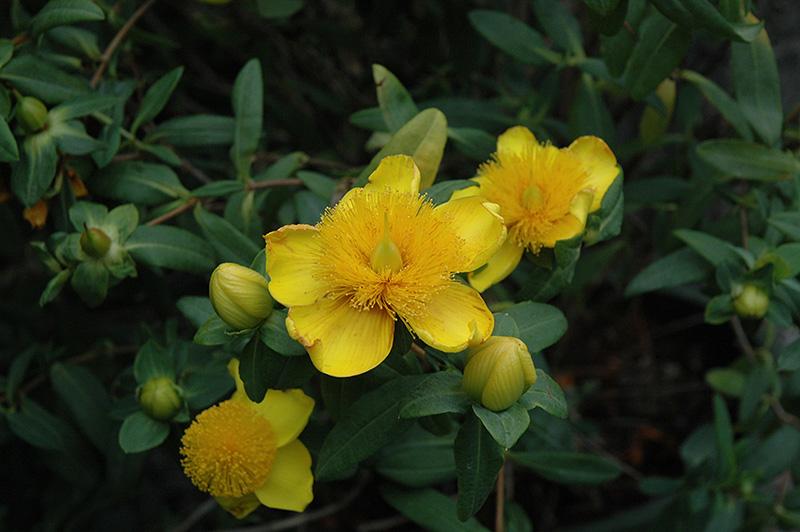
There’s no mistaking how “Sunburst” gets its name. The buttercup-yellow flowers with their pompom centers appear mid-summer and last until mid-fall, weather permitting.
Sunburst will grow to be three feet tall and wide. The abundant blossoms make excellent cut flowers.
Spiderwort
I, for one, love plants that have an otherworldly look to them. If you’re up for a dose of exotic too, spiderwort may be just the perennial you’re looking for!
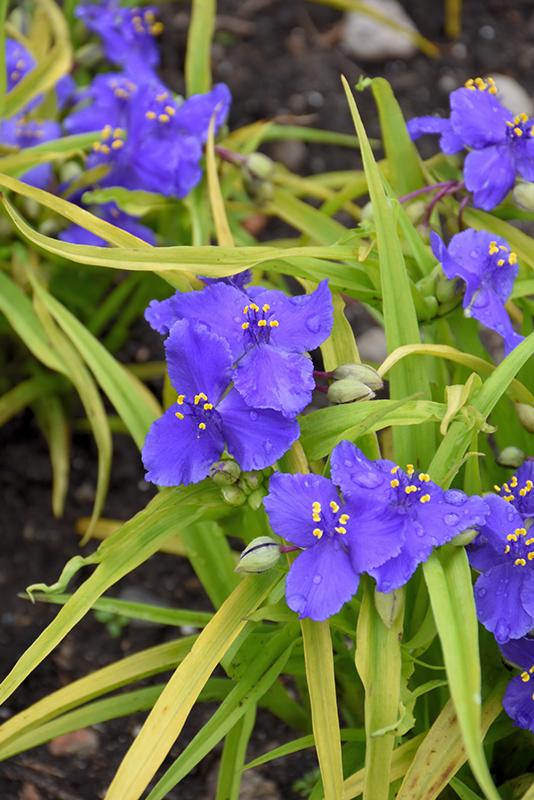
Spiderwort offers the beautiful blue color so many gardeners, myself included, can’t get enough of. The blossoms appear in early spring above golden foliage that resembles a small ornamental grass. The leaves gradually change over to a soft chartreuse as the summer unfolds.
Spiderworts commonly go dormant in mid-summer, at which point they should be cut back hard to encourage a possible late-season flush of foliage and flowers. This temporary dormancy makes spiderworts ideal for planting here and there among mid-summer bloomers.
Spiderwort matures to about 14″ tall and wide. They prefer part to full shade and evenly moist soil.
Bonfire Cushion Spurge
Never underestimate the appeal of beautiful foliage. Bonfire cushion spurge is a perfect example of that.
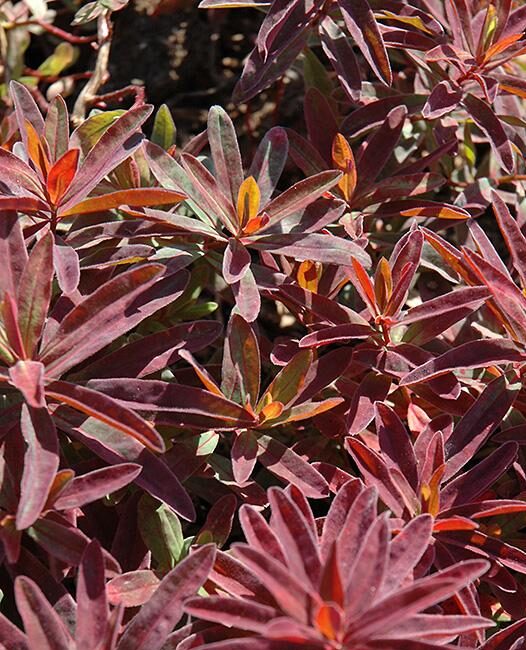
Bonfire shows off with new bright green leaves in spring. Each stem will end in a small but boldly-yellow flower surrounded by yellow bracts, or modified leaves. The foliage steadily morphs to a rich blend of red, orange, and purple in mid-summer. The show ends with a brilliant display of red in the fall.
Bonfire cushion spurge will mature to a height of 10″, spreading to about 18″ wide. It prefers full sun to part shade, but may lose it’s tight, compact habit if grown in too much shade. Give it average moisture in well-drained soil.
Note: Bonfire cushion spurge is in the euphorbia family, which includes poinsettias. The milky white sap of plants in this family can be irritating to skin.
“Carolina Moonlight” False Indigo
I’ve saved a real show stopper for last: Carolina Moonlight false indigo. If you’re looking for a very upright plant loaded with color for the back of a bed, you’ve just found it!
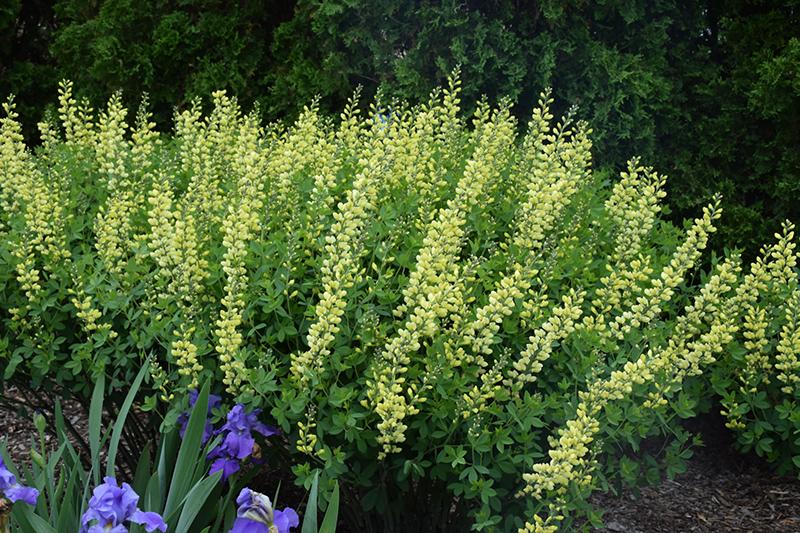
The flower spikes of Carolina Moonlight (shown above) are covered with buttery-yellow pea-like flowers from late spring to mid-summer, much to the pleasure of passing bees. Come late summer, the spikes will be loaded with tiny black seed pods.
Carolina Moonshine will mature to four feet tall (with flowers), and three feet wide. It prefers dry to average moisture and well-drained soil. Watered properly–deeply and less often after a couple of seasons–this wonderful plant can eventually be right at home in a drought-tolerant garden. As a bonus, the spikes will make excellent-cut flowers.
Remember What They Say…
Perennials can take a few seasons to reach their full potential, so keep these words in mind: The first season they sleep. The next season they creep. In the third season, they leap! Here’s to a garden full of leaping perennials from Tagawa! Stop by Tagawa Gardens to talk to our Perennials team to learn more.




